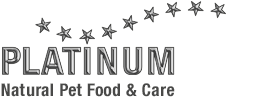
Risks in wintertime
Besides chillness and wetness your dog is confronted with other risks in wintertime
Sometimes good things for your car can be fatal ones for your dog: anti-freezing fluids for the windscreen washer! Ethylenglycol is odorless with a sweet flavour. For this reason dogs happily lick up spilt or decurrent drops. Unfortunately just a few milliliters ethylenglycol are enough to begin a poisoning process ending in death. Therefore never store anti-freezing fluids within the reach of dogs.
Salted roads ways can be dangerous too. Penetration of salt into small fissures of the pad can cause serious pain. So it is important to treat the paws with Vaseline or milking grease continuously. The best is to apply the fat shortly before you go for a walk. Fat doesn’t only protect from coldness and salt, it also prevents snow lumps from sticking between the toes. After the walk the paws should be cleaned with water and thoroughly dried to prevent inflammation, for example caused by saccharomyces albicans.
Small chunks of ice can remain between the toes of longhaired dogs, especially of those with heavy growth of hair. This can disable them from walking and can cause skin injuries. To prevent from these problems the hair should be kept short. This also facilitates the care and drying after being outside.
Hypothermia: Protective clothing can be reasonable for dogs with thin or short coats and long outside stays. Especially debilitated and old dogs undercool very fast. It is important to take care, that the clothing is breathable.
Generally it should be also avoided that dogs eat undue quantities of snow. This could cause an inflammation of the gastric mucosa which leads to diarrhea and vomiting.
Bad visibility of the dog: in wintertime the day light hours are limited. Most walks in the early morning or the late afternoon are in darkness. But also grey and foggy daytime has a very poor visibility. Motorists and cyclists can easily lose sight of your dog, so that it can endanger itself and others. Flash light collars, reflection on dog coats, harnesses, collars or leads make the dog visible from far distances and protect it and others. You should take care that flash light collars don’t blink but have a constant light. Blinking collars could irritate or alienate the dog.














































